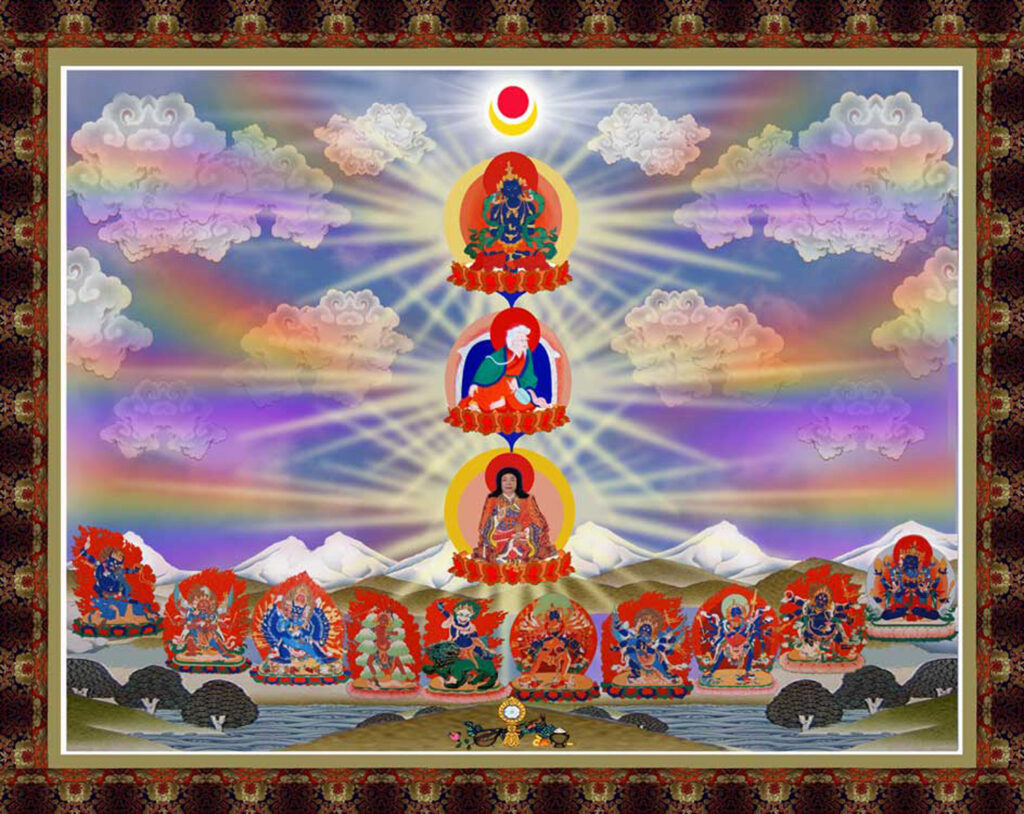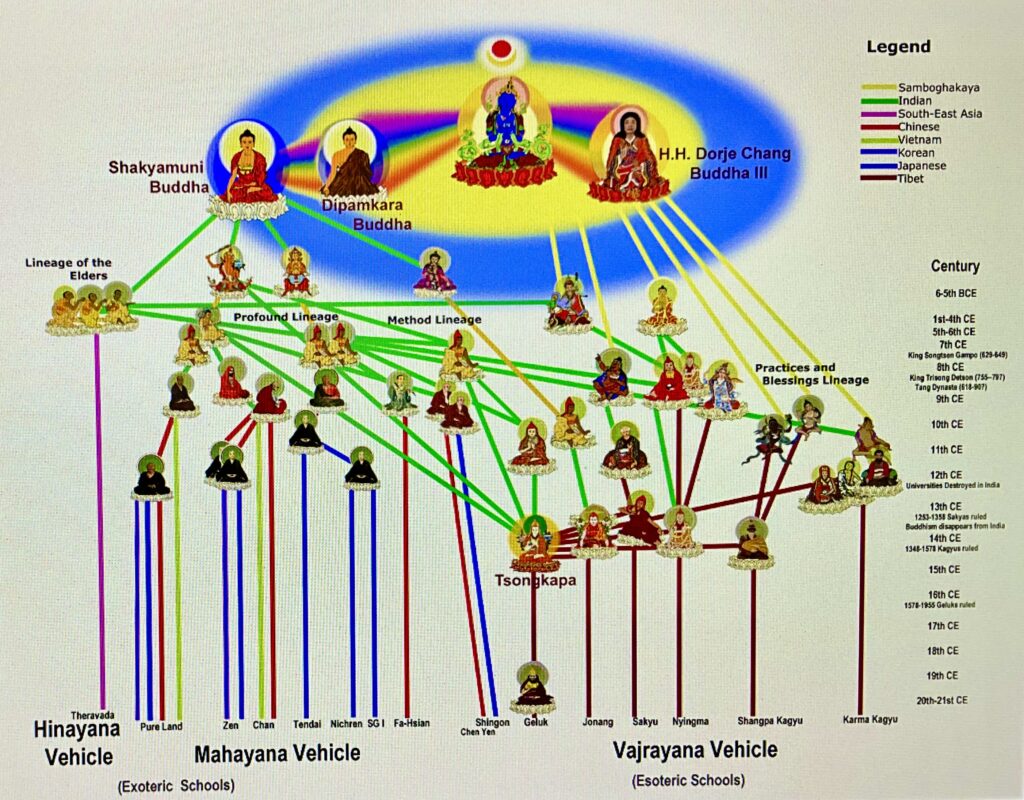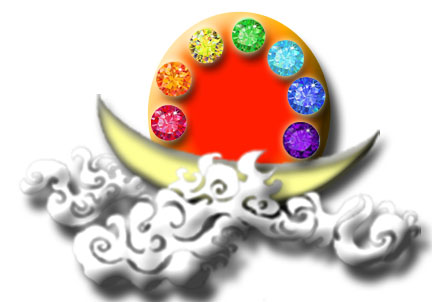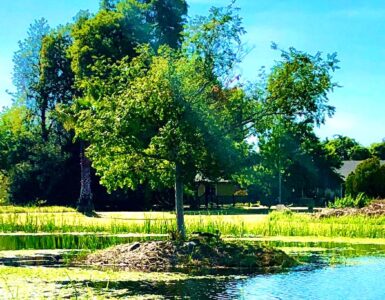
Although this article was posted last week, it has been revised to reflect enhancements to the charts and a VIDEO added to include discussion on this Roadmap held on January 4.
We are now at about the halfway point in discussing and studying the preliminary translation that we now have of H.H. Dorje Chang Buddha’s wonderful Expounding the Absolute Truth through the Heart Sutra (ETATTTHS). I want to take time now to return to the framework of what we started on April 29, 2023 with our Master Class C41(A)-Three Major Stages and Paths of Buddhist Practice.
Calling it a class or even a Master Class, is not correct, or at least not adequate. It is really a survey of many classes that compare how H.H. Dorje Chang Buddha III explains certain Buddhist principles with Je Tsongkapa’s method using the Lam Rim format. However, when we got to the wisdom or prajna phase, we decided to switch to full blown courses using H.H. Dorje Chang Buddha’s ETATTTHS. THERE WAS SIMPLY NO COMPABLE TEXT—EVEN IF WE ONLY HAD A PRELIMINARY TRANSLATION.
We have taken some breaks to focus on practice as C41(A) is, after all, a course on practice. For example we just finished an intensive Seminar on SAUMOL and last April we skipped to the discourse at the end of ETATTTHS to preview “DCB21-How to Realize Prajna.” We began DCB24 on January 4, 2025, to continue our study of ETATTTHS. When we finish, we will go back to the C41(A) umbrella and tackle the last and concluding phase of correctly implementing what we have learned to improve our practice. The last course in the ETATTTHS-DCB25 and the concluding phase of C41(A) are still under development and will be added when available.
Please consider C41(A) as a roadmap to better understand the many teachings provided us by our Buddha Master—most still only available as preliminary translations—that are organized in a format used by a Great Master and reformer from times past, Je Tsongkapa. This method does not have the approval or blessing of my Buddha Master H.H. Dorje Chang III or anyone else. I am ill prepared or equipped to do this, but I am, at the moment, unique in the position of having some dispensations from my Buddha Master to set up the Learning from Buddha College & Seminary (LFBCS) and His permission to read from the preliminary English translations I was given. I have also arranged classes at the Holy Vajrasana Temple and elsewhere where I could read those translations and enabled people to come to the temple to read or listen to them. When COVID hit, we closed the temple and started the Lemonade Sangha and went online with the LFBCS. Where possible, courses were established with recorded readings or actual text. The ETATTTHS was more complicated. With the help of other students who were able to come to the temple and who had also read the ETATTTHS, we devised a process of asking questions about the sutra and then finding the answers in the preliminary translation of the text. We will try our best to revise these answers when we have authorized translations. Later on I also posted some of these Q and As on the blog to encourage others to join our ZOOM discussions. .
You may also ask why use the Lam Rim format of Je Tsongkapa to do this. First, Tsongkapa’s work was based on a survey of all the known teachings of Shakyamuni Buddha and like our Buddha Master, his mission was to correct errors in the available versions of those teachings. Secondly, The Buddha Master recommended that those who wish to become masters and take disciples should study the Lam Rim Chen Mo along with other commentaries. Some day we hope to be able to do that, but C41(A) is provided as an interim solution. And lastly, it is a successful model used in Tibet and now worldwide to train students in the evolution of Shakyamuni Buddha’s teachings over time and how we each need to go through those phases, if not in this life, certainly in our overall evolution toward Buddhahood. I have read that the LamRim contains all the major principles that Shakyamuni Buddha taught. I also wanted to compare some of the specifics of what Tsongkapa did to what I had learned from my Buddha Master. The structure or format of C41(A) is outlined in the following chart:
You can compare this chart to the greatly simplified evolution of Buddhism video and graphic shown below. A longer more detailed video on the Evolution of Buddhism can be found in G03(A) & G03. Patriarch Master Pabongka is shown as the only modern master on this illustration as we used his commentary in C41(A). The Buddha Master spoke favorably of Master Pabongka. If I am ever able to redo this chart, I would move King Suchandra to the right and squeeze in the Indian Masters Dignaga and Dharmakirti to include all of the Six Jewels of ancient India. Another chart that provides the names and time periods of the patriarchs and matriarchs on the graphic plus a few more can be found below the graphic.
Simplified Evolution of Buddhism from 623 BCE to Present

CLICK for video of How Buddhism Came to the West.
The Saturday morning ZOOM discussions started again on January 4, 2025. You can still join if you enroll in C41(A) or the specific LFBCS course being featured. CLICK for more information. With full enrollment in the Buddhist Studies program you get to watch the videos of most past discussions and do the homework opportunities. If you enroll in the Xiuxing Seminary program, you get to see and do all of them. There are a few advanced courses that require you take refuge and are only available to seminary students. CLICK for a list and links to all available courses by type of membership. The Auditing membership is free, but the related (A) classes do not have interactive homework or videos of past sessions.
CLICK for Roadmap to C41(A)-Three Principal Stages & Paths of Buddhist Practice. Preview VIDEO available to everyone.
CLICK for link to related article on an expanded article on LFBCS courses G03(A) & GO3-Evolution of Buddhism.
CLICK for article on “Five Time Periods of Shakyamuni Buddha’s Teaching.”
CLICK for article on the “The Eight Charioteers who brought Buddhism to Tibet.”
Original article posted December 27, 2024.




Add comment